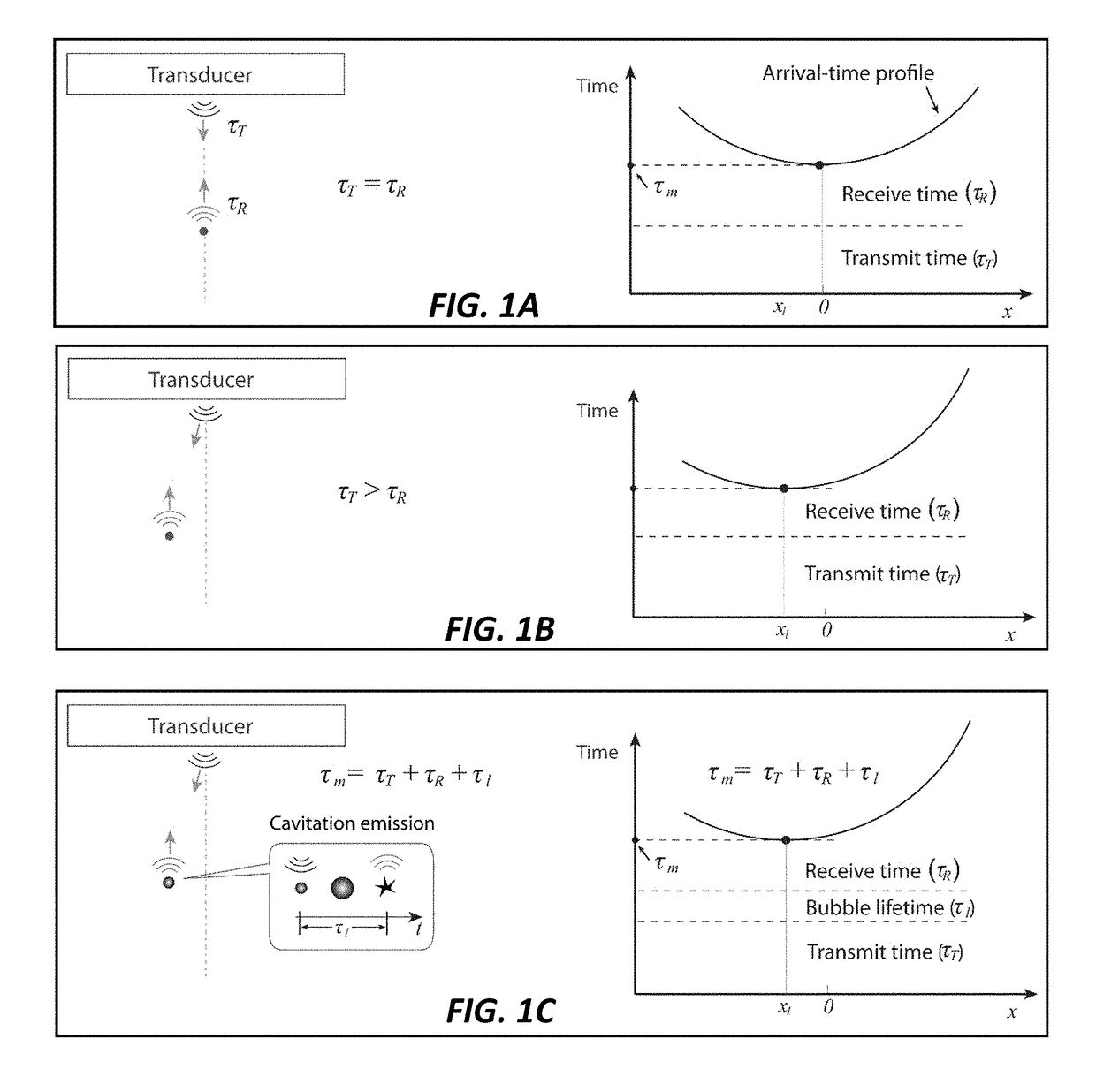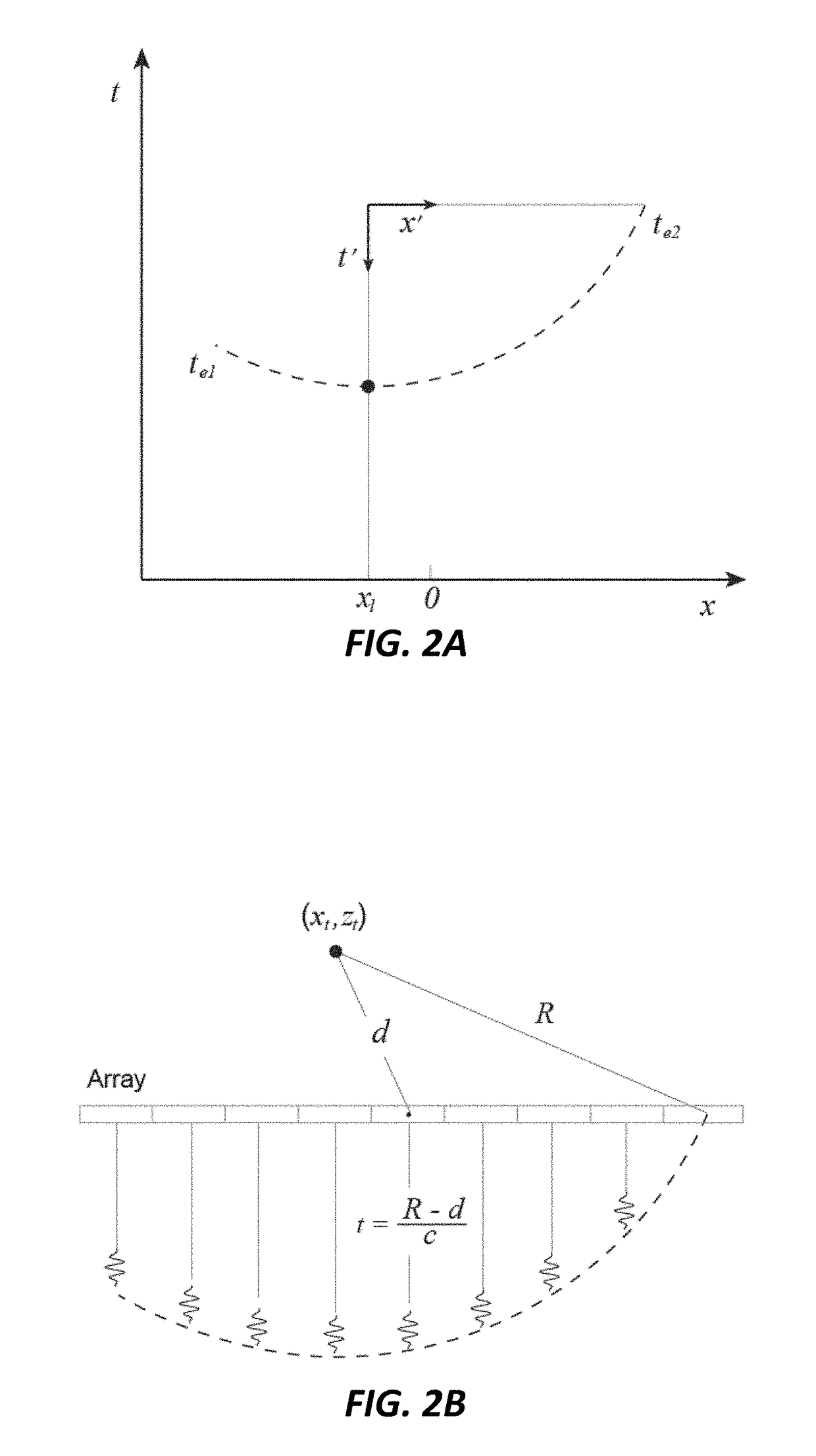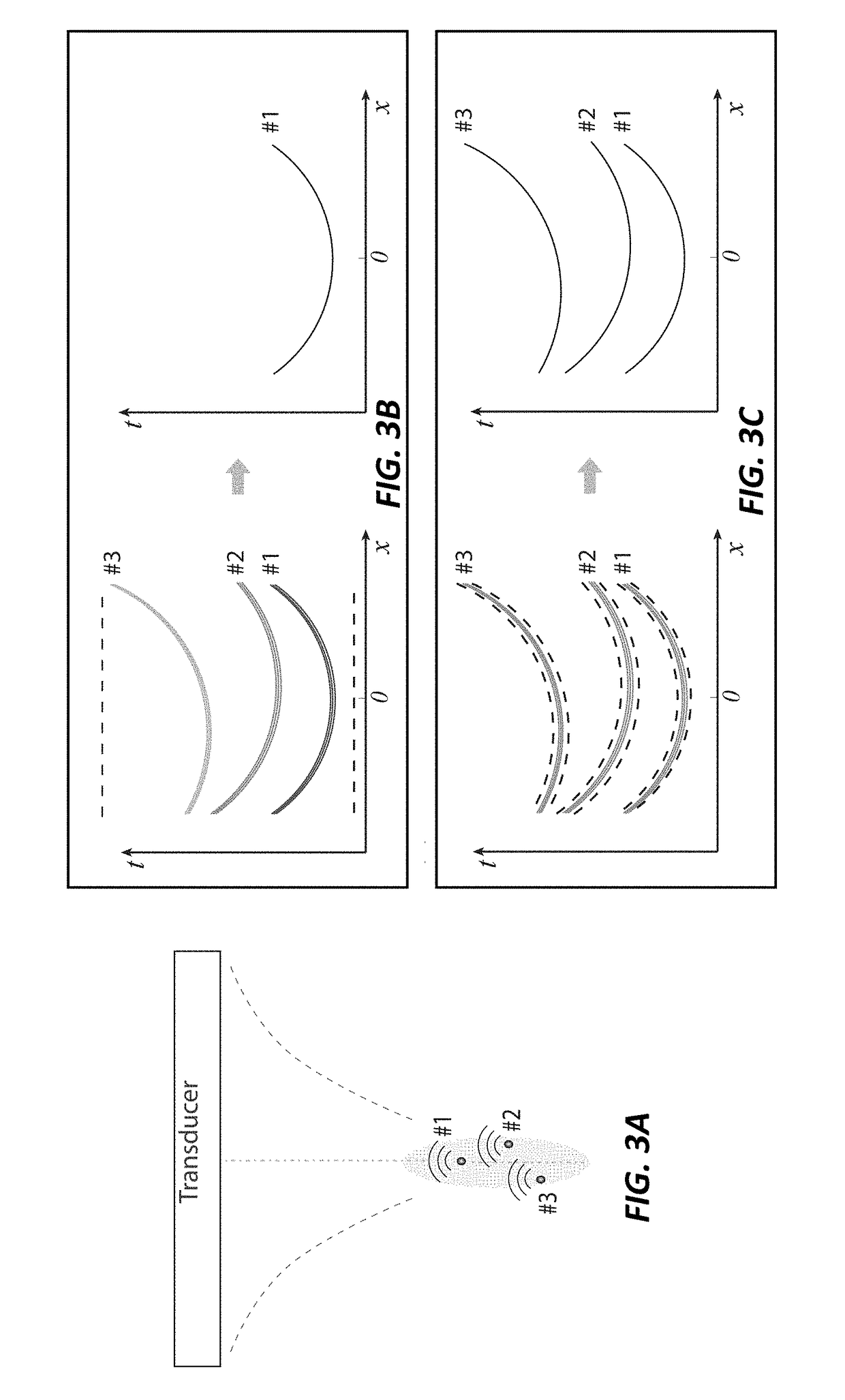System and device for improved ultrasound cavitation mapping
- Summary
- Abstract
- Description
- Claims
- Application Information
AI Technical Summary
Benefits of technology
Problems solved by technology
Method used
Image
Examples
Embodiment Construction
[0024]Disclosed herein is a method to adapt a speed of sound estimation technique to perform passive cavitation mapping based on cavitation source localization. The axial resolution of passive cavitation imaging by source localization is significantly improved by eliminating factors contributing to the tail artifact. According to the invention, cavitation sources are localized by applying a polynomial fit to arrival-time profiles of the cavitation signals, which is not limited by the axially-elongated point spread function of the passive imaging transducer. Furthermore, the tail artifact arising from bubble-bubble interactions can be effectively suppressed based on analysis on fitting quality and bubble lifetime, thus further improving the imaging quality.
[0025]Upon insonification with an imaging pulse, an ideal stationary point target reflects a spherical wave. The arrival times of the backscattered echoes as they return to a linear array of transducer elements are based on the pat...
PUM
 Login to View More
Login to View More Abstract
Description
Claims
Application Information
 Login to View More
Login to View More - R&D
- Intellectual Property
- Life Sciences
- Materials
- Tech Scout
- Unparalleled Data Quality
- Higher Quality Content
- 60% Fewer Hallucinations
Browse by: Latest US Patents, China's latest patents, Technical Efficacy Thesaurus, Application Domain, Technology Topic, Popular Technical Reports.
© 2025 PatSnap. All rights reserved.Legal|Privacy policy|Modern Slavery Act Transparency Statement|Sitemap|About US| Contact US: help@patsnap.com



